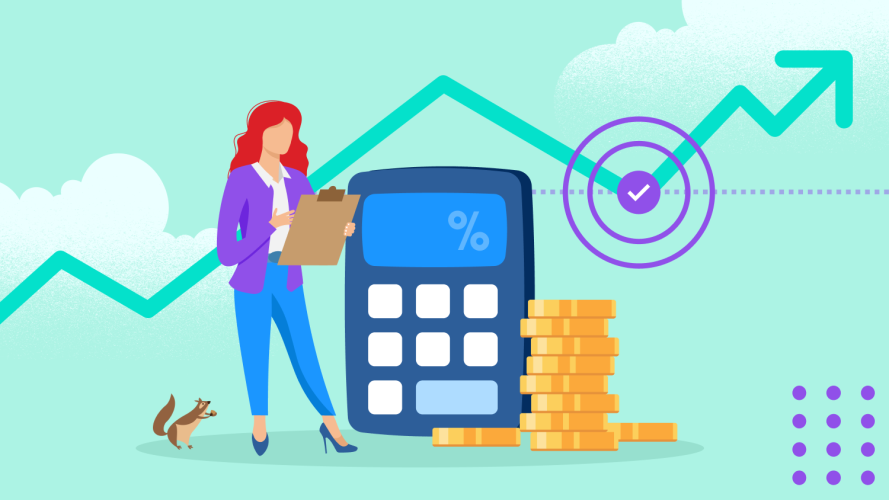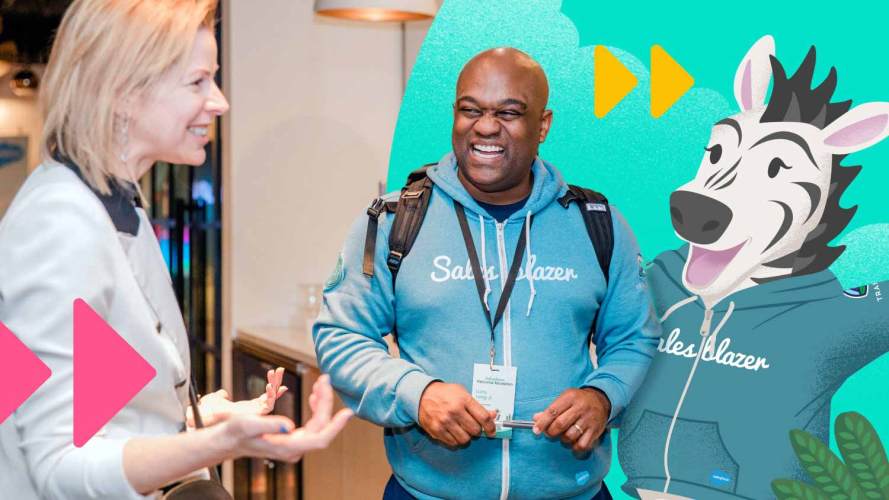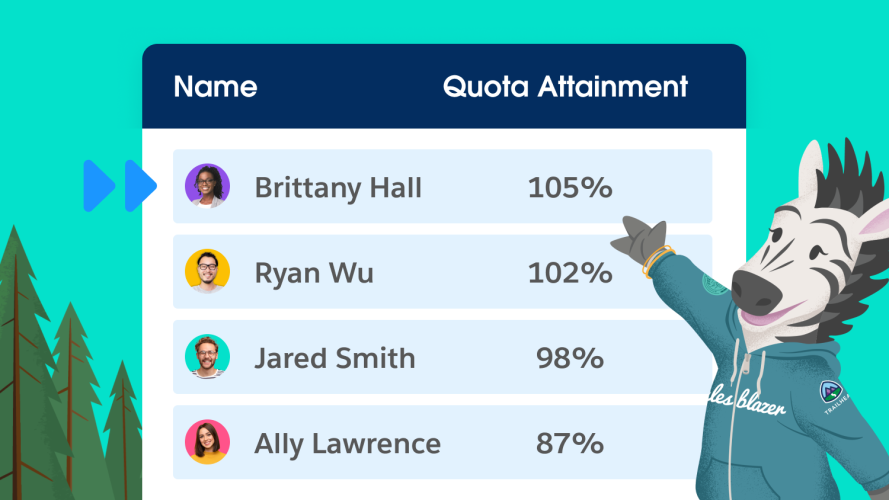5 Buying Signals Too Many Sellers Miss, According to Experts

A prospect follow on Instagram or a hard-hitting question during negotiations might be the key to a lucrative deal. Learn how to make the most of it.

Erin Hueffner
You’ve done your customer research, made prospecting calls, and connected with a potential buyer. Maybe they’ve even agreed to watch a demo. But do they really want to buy, or are they just window shopping?
Here’s the hard truth: “You don’t know if they’re ready to buy until they tell you they’re ready to buy, and you can’t believe it until you get a signed contract,” said Richard Harris, sales coach and founder of The Harris Consulting Group. “Instead, look for a strong indication of intent to purchase.”
Put another way: It all comes down to being able to read buying signals. Read on for the five signals most reps miss, and how to use them to get to close faster.
Catch a buying signal? Sail to close in record time
Use our Sales Engagement tool to jump on hot leads fast with ready-to-go email templates, AI-generated customer insights, and recommendations for next deal actions.



What are buying signals and why are they important?
Buying signals are subtle communication cues from prospects that indicate an interest in a product or service. These signals take many forms — verbal commitments in sales calls, emailed questions about product features, or smiles and nods during negotiation — and can surface at any point in the sales process.
If you correctly identify a buying signal, landing a deal becomes much easier. You can lean into prospect need or interest, speeding up the sales cycle by cutting out long negotiations, and close quickly. This gets you to quota faster, which helps you hit company-wide sales targets.
5 buying signals to look for (and what to do next)
Many reps are so eager to close they miss the most subtle conversational or engagement buying signals, typically nested in the activities of a normal sale. They can be hard to spot, but if you know what to look for, you’ll be able to identify hot leads and put them on the fast track to close.
Here are five buying signals to look out for:
1. A potential prospect follows you on social media
If someone follows you out on social media, they’re likely interested in what you have to say. But how do you know if they are interested in what you’re selling? Take a look at their profile and see if their title and industry align with your buyer persona. If so, you have a lead worth following up on.
“When I get a LinkedIn connection request or Instagram follow, I always follow up directly with the account holder,” said Elyse Archer, CEO and founder of She Sells. “They are giving you a natural way to start a conversation. There’s so much money left untapped when you don’t follow up with the people who fit your buyer persona.”
What to do next: Follow them back and reach out with a personal thank you within 24 hours. Then, ask what prompted the follow. Were they interested in the content you posted, or did they just want to grow their network? Also, ask what they have on tap for their business in the coming year. If what you learn fits with the interests, characteristics, and needs of your buyer profile, you can add this lead to your pipeline and dig into discovery calls.
2. Your primary deal contact connects you with decision-makers
Most B2B sales conversations happen with a “gatekeeper” — that initial contact who’s in charge of weeding out product or service options for a higher-up. If a prospect starts connecting you with decision-makers like C-suite approvers or the CFO, they’re likely serious about a purchase.
“Are they willing to give you a name and title? Are they getting you additional meetings?” Harris asks when coaching sales teams. “Those are good signs.”
What to do next: Reach out to your initial contact directly and ask about the new contact’s role in the process and how you can help deliver helpful, relevant information for them. Then follow up with both via email, introducing yourself and offering a quick status of the deal and a reminder of what the next steps are. Include any information your initial point of contact suggests.
3. The prospect asks a lot of tough questions
“The highest close rates are among prospects who are very inquisitive. And some of their questions might even seem negative,” noted Alexine Mudawar, CEO of Women in Sales. “They might ask things like, ‘Why would we choose your product over this other solution?’ But don’t be put off by this. Because they’re asking questions, it likely means they’re thinking about how they would implement your solution.”
What to do next: First of all, don’t respond to questions defensively. If a prospect is asking a lot of pointed questions, they may be trying to understand how and why they would use your product or service. Look for themes in their questions to get to the heart of their concern or confusion. Are they worried about cost, maintenance, or time to onboard? Ask follow-up questions to clarify, then engage in active listening. After collecting enough information to understand their overarching concerns, you can pointedly address them with additional explanations or product materials to keep the deal moving toward close.
4. Key stakeholders speed up the buying process
“Is the company or prospect expediting timelines and turning things around faster? That’s usually a good sign, especially when you’re working on a slow-moving deal,” said Mudawar. “If you have a high-level stakeholder or decision-maker helping kick off procurement or legal review early (when you’re still in the product or service evaluation stage), that’s a strong buying signal.”
What to do next: Ask what you can do to expedite the process on your end. What demos, pricing details, or technical materials do they need to make a decision? Work with your tech team on making trials or demos available (if applicable), and with your finance teams on drafting proposals and contracts so they’re ready to go. Alert the account manager about the expedited timeline so they’re ready to help onboard sooner rather than later.
5. The prospect notes a time-sensitive need for your product or service
If a prospect comes to you with a deadline – a retailer needs a better CRM ahead of the holiday season, for example – that’s a very strong buying signal. You often won’t get a concrete date, but if you hear them talk about a season or period of time when they need your product or service, noting consequences if it’s not onboarded beforehand, then they have a strong motivation to purchase — and fast.
Harris knows this well: “When I’m on a sales call, I’ll ask, ‘You want to implement this by such-and-such a date. If it’s not implemented, what happens after the date passes?’ If there’s a real crisis looming without your product or service, then the timeline is real and it’s a signal they’re ready to buy.”
What to do next: Before you jump into contract drafting, confirm your product or service is the right fit. Set up a meeting to confirm the prospect’s pain points and needs so you can carefully align these with the solutions you have to offer. If there’s a good fit, clarify what they need to move ahead with the deal (demos, technical details, etc.). If they’re already convinced your product or service is the right one, you can move ahead with pricing negotiations, proposals, and contracts.
Catch the buying signals others miss
At least half of selling is paying attention to buyer behavior. If you can see (or hear) the right buying signals, you can capture big-win opportunities quickly. Start by studying the signals above, but be sure to review your sales calls to see if other buying signals are surfacing in conversations. Add the most common ones to your onboarding program to give new reps what they need to succeed, and remind existing reps of common buying signals during team meetings and check-ins. With these top of mind, hot leads will be easy to spot.
Get AI-powered insights to close more deals, faster
Use Sales Cloud to uncover buying signals with AI-powered insights so you can focus on the right deal at the right time.
























